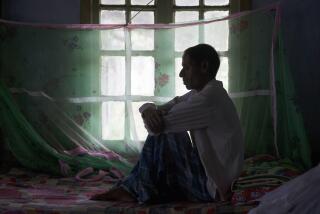AIDS Epidemic
- Share via
After recently reading the Los Angeles Times’ excellent editorial (“AIDS: Cool Reception,” Feb. 20) about AIDS prevention programs, I was concerned that some readers may conclude that the AIDS epidemic among males with male partners has peaked and that the worst is over. That is far from the case.
While some may take the position that behavioral changes prompted by education have drastically cut the rate of new infections among the gay population, changes in behavior demonstrated in select groups may not be typical of the population as a whole. Although some members of the gay population have adopted “safer sex” practices, thus reducing the risk of transmission of the human immunodeficiency virus (HIV), others continue to engage in high-risk behavior, as evidenced by newly diagnosed gonorrhea and syphilis cases in this population.
In San Diego, more gay men will be diagnosed with AIDS during 1989 than during any previous year. Progression to disease and transmission to others continue.
Accurately predicting the number of AIDS cases that will occur in San Diego County is useful as a tool. This tool permits better recognition on the part of health planners for the number of individuals who will be requiring hospital beds, social services and medical care.
Detecting new trends such as the increase or decrease in the rate at which new cases occur is, likewise, important. However, one must be cautious in over-interpreting the results that are found.
AIDS is a specific disease condition diagnosed after many years of silent infection with the HIV. In 1985 and 1986, it was felt that the interval from the time of the infection until disease expression was relatively brief. Likewise at that point, it was felt that only a minority of infected individuals would develop symptoms related to viral infection.
As time has passed, we find that the vast majority of infected individuals will ultimately develop symptoms of illness related to HIV infection, but that it may take 7, 10, 15 or more years before symptoms of this infection are recognized. Treatment agents, such as AZT, have shown an increase in the interval before progression to the full criteria for AIDS.
The bottom-line significance is that a slackening of the AIDS epidemic in San Diego County cannot be defined by noting small changes in the rate of increase in new cases.
Continued emphasis on risk-reduction education and reinforcement of positive behavior change to reduce HIV transmission in all high-risk groups must be continued and repeatedly fostered. We cannot be complacent about the task of changing high-risk behavior.
Instead, we must be consistent and reinforce the need for maintaining behaviors that will eliminate HIV transmission risk, and continue to provide this education and reinforcement to all individuals reaching the age of sexual maturity.
MICHELE M. GINSBERG
Chief, Epidemiology Unit
County Department of Health Services






